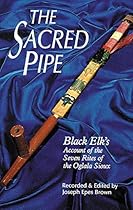

Voices from the Delaware Big House Ceremony examines and celebrates the Big House ceremony; the most important Delaware Indian religious observance to be documented historically. Edited by Robert S. Grumet; this compilation of essays offers diverse perspectives; from both historical documents and contemporary accounts; which shed light on the ceremony and its role in Delaware culture. As Grumet says; "The many voices brought together in this book produce something more akin to a chorus than a chant."The annual fall festival known as the "Gamwing" (Big House) was the center of life for Delaware Indian communities in Pennsylvania; Ohio; and Indiana west to Ontario and Oklahoma. The last ceremony was performed by the Eastern Oklahoma Delaware community in 1924. Determined to preserve their traditions for future generations; Delaware Big House followers have worked with anthropologists to preserve Big House texts; rituals; songs; and sacred objects.Including commentaries by Delaware traditionalists from communities in Oklahoma; Wisconsin; and Ontario; where most descendants of the Big House Church live today; the volume also features an ethnographic description of the Big House ceremony and historical accounts dating from 1655 to 1984.Voices from the Delaware Big House Ceremony contributors and consultants are John Bierhorst; Ruthe Blalock Jones; Marlene Molly Miller; Michael Pace; Bruce L. Pearson; Terry J. Prewitt; James A. Rementer; and Darryl Stonefish.
#187366 in Books 1989-10-15Original language:EnglishPDF # 1 8.50 x .40 x 5.50l; .53 #File Name: 0806121246143 pages
Review
4 of 4 people found the following review helpful. Learn if you wish.....By Robin F.This is for those who have a keen interest in Native Ways of honoring all that is. If you have no real interest in their ways this will not likely suit you. For those who have a taste for understanding a connection to our own existence and all that is natural and have had some interaction with the old ones and their ways of honoring the earth and all she gives us....this is for you. I am Tsalagi...Cherokee and there are many lessons here....2 of 2 people found the following review helpful. Thank you for preserving these sacred ritesBy CrystalThis book isn't long; but it is another of the Black Elk books that I love. John Neidhardt writes in Black Elk Speaks: Being the Life Story of a Holy Man of the Oglala Sioux; The Premier Edition that Black Elk was waiting outside his home and appeared to be waiting for him. Joseph Epes Brown had read Black Elk Speaks and wanted to meet Black Elk and write about Lakota sacred rituals. Neidhardt told him Black Elk would not speak to him; but JEB went anyway. Black Elk was expecting him and collaboration was born to preserve what Black Elk wanted preserved. To any that feel Black Elk was exploited by the white man; I say he knew exactly what he was doing. Black Elk wanted to preserve his visions and thus Black Elk Speaks was born. Then he wanted to preserve these sacred rites for his pepole and thus this book was born and dedicated to his people the Sioux. Those who have touched shamanism and the spiritual know the truth of such things. If you have read about ancient spiritual practices; you will recognize common threads with other spiritual/shamanic traditions. JEB recounts he met Black Elk in 1947; three years before he passed. Black Elk's son Benjamin helped to translate for the book so again I reiterate as with Black Elk Speaks I doubt there could be much misstep in the translation of Black Elk's words.The story of the gift of the sacred pipe is told; ancestor or spirit respect/worship; the sweat lodge rite of purification; lamentation or crying for a vision; sun dance; preparing a girl for womanhood; playing ball; and the making of relatives. I love the little details in the book such as what items they used for the ceremonies; prayers and chants; stories related to the rites; drawings; and historical photos. In the making of relatives chapter; Black Elk puts forth the agenda of peace and love between all men "even if they should be of another nation than ours." The chapter ends with "But above all you should understand that there can never be peace between nations until there is first known that true peace; as I have said often said; is within the souls of men." After reading this book; I felt more keenly our sacred connection to all things and the Great Spirit in all things.1 of 1 people found the following review helpful. Learned a lotBy CustomerI bought this book to help me write a paper for my college religions class. I dated a guy for three years who was native and I became very close with is family but never really knew what they "believed" in. This book really opened my eyes and cleared up a lot of things that I had only heard snippets about from my close native friends. I learned a lot and felt a lot of emotions while reading.